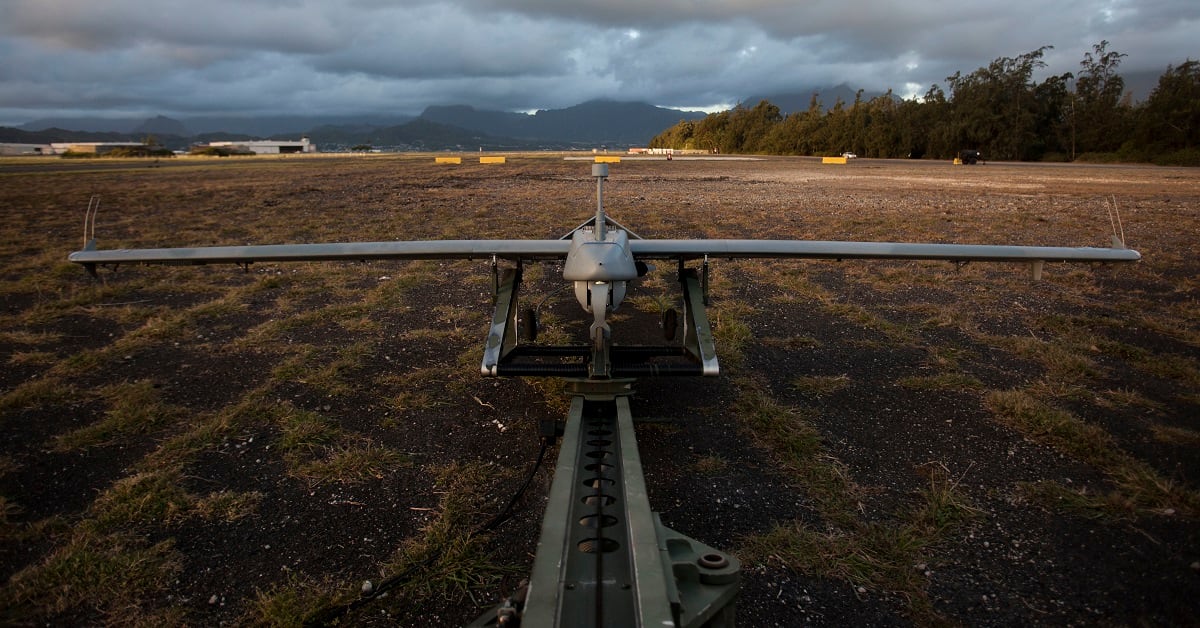The Corps doled out its first "R" device awards to a couple of Marine drone pilots battling Islamic State militants in the Philippines in December 2017.
Less than a year later, the Corps has awarded 17 Remote Impact Devices, or "R" devices, to Marines operating remote weapon systems on battlefields across the globe, according to figures provided by Manpower and Reserve Affairs.
The increased number of awarded "R" devices provides a narrow glimpse into the Corps’ reliance on remote weapons systems, from cyber to drone operations, in its military campaigns.
In comparison, the Air Force just recently awarded its first five "R" devices to four MQ-9 Reaper pilots and a sensor operator on July 12 for their support in saving ground forces and engaging hostile enemy targets.
The Corps has already dished out 17 "R" devices, and the Marines don’t even operate a single large group five drone like the hunter-killer Reapers piloted by the Air Force.
Instead, the Corps has come to rely on a hodgepodge of smaller class tactical drones like the RQ-7B Shadow and the RQ-21 Blackjack.
Drones, automation and remotely operated weapon systems are being integrated into the Corps’ combat operations at an ever-increasing pace.
The "R" devices awarded to Sgt. Joseph Latsch and Sgt. Ethan Mintus in December were for their efforts in piloting RQ-7Bs and helping direct fires against ISIS militants holed up in the embattled city of Marawi in the Philippines.
After months of fighting and much destruction Philippine forces eventually dislodged ISIS fighters and liberated the city.
But the Corps’ RQ-7s recently just flew its last flight in late July and the Marines will now rely on the RQ-21 Blackjack for a large portion of its surveillance needs.

Despite the sun setting on the RQ-7, the Corps has been getting serious in expanding its drone and remote weapons capabilities.
Soon the RQ-21 will be equipped with an electronic warfare payload that will aid Marines with electronic attack capabilities downrange.
And the Corps is amid plans to greatly expand its loitering munition or suicide drone capability. The Corps recently successfully tested a single operator controlling a swarm of six suicide drones.
Eventually, the Corps wants a single operator to control up to 15 of the suicide drones at once. The small tactical suicide drones will also come with a range of capabilities from kinetic strikes to electronic attack.
While the Corps lacks the larger hunter-killer drones like the Reaper, the Marines are in the early stages of developing a group five drone called the MUX and has been partnering with the Air Force to help build some of the institutional knowledge in piloting and maintaining a larger class of drone.
And the Corps wants its futuristic drone to come with a lot of bells and whistles to include airborne early warning radar, kinetic strike, electronic attack, communications relay and surveillance.
The Corps is also looking at remotely piloted aircraft to reduce strains on its supply chains. The Corps has been testing an automated Huey and smaller drones that can carry up to 500 pounds of gear.
In 2017, the Pentagon rolled out new eligibility rules that included new "C" and "R" devices in lieu of the ‘V’ device that is awarded strictly for valor on the battlefield.
The "R" device was intended to award service members who may have impacted real world battlefield operations but at limited risk or exposure to themselves.
Shawn Snow is the senior reporter for Marine Corps Times and a Marine Corps veteran.





